
Please install a more recent version of your browser.
20 September 2019
6 minutes read
Artist Dries Depoorter hacks webcams and makes people watch it. With his work he shows the impact of technology on our society. With Die With Me he designed an app that connects people with an almost dead phone battery. Creativity anno now. He conquers the world and gives lectures all over the world with his tools, websites and apps. He experiments with private data of random people that he finds on the internet. In his projects he raises themes like social identity, sharing big data, encrypting data and (the lack of) the protection of our online privacy.
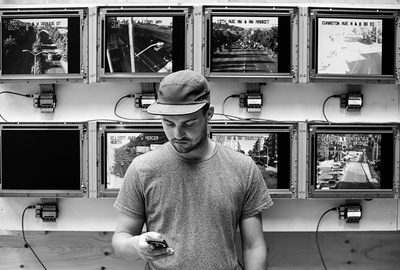
Dries Depoorter © Alona Vibe
Dries Depoorter is one of our speakers at the main stage of Creative Ville. Do you want to hear his story on 22nd of November? Buy your ticket now!
I’ve always been interested in technology and the impact. It triggered something. As a beginning artist I had four projects which were about me and I also published personal information. Thereby, I got into trouble. It triggered my interest. And the fascination for privacy and ‘surveillance’ increased.
An applicant who takes himself seriously provides a clean LinkedIn page with pictures which may be seen by his potential boss. A sharp single provides an attractive Tinder-profile with sexy pictures. By putting pictures side by side I exposed the discrepancy between pictures on LinkedIn and Tinder in my work TinderIn.
I’m showing the dangers of some new technologies and trends in my work. People write about it, but I want to make it tangible.
I test boundaries and use humor frequently to promote my work.
I’m looking for a good balance. It’s important to me that my work can be interpreted in an easy way. And that you don’t need a two-year art history education to ‘understand’ an art work.
Tinder and LinkedIn are actually opposite platforms. This was something interesting. It was important for me not to ask permission to people, which got me into trouble. It is a fine line. The project has been gleaned quickly by media. At that time law firms wrote blogs about it. One described it as legal, the other wrote that it was illegal. We go far to be loved online. A lot of people are too focused on their amount of followers.
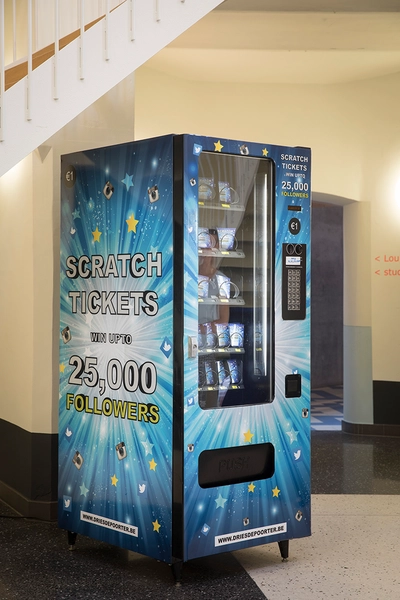
Get Popular Vending Machine, Dries Depoorter © Kristof Vrancken
Another project of mine is the Get Popular Vending Machine with the scratch tickets. You can become popular by scratching. You can win up to 25,000 online followers. I sell them in an art context, in vending machines on festivals. The chance of winning is 5%. It’s an art project, but you can actually win. I buy 1,000 ghost followers for 17 dollars. A follow up of this project is Quick Fix, a vending machine which allows you to buy followers or likes for a couple of hundred euros on social media.
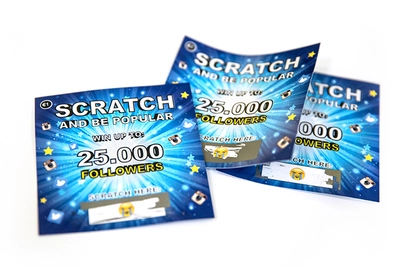
Scratch tickets, Dries Depoorter © Kristof Vrancken
I want people start to think.
Not by explaining, but through understanding my work and let it speak. In the installation Face Detected I asked nine sculptors to sculpt a face. The computer tries to recognize the face and at that moment the masterpiece is ready. The sculptors stop from the moment the computer recognizes the face.
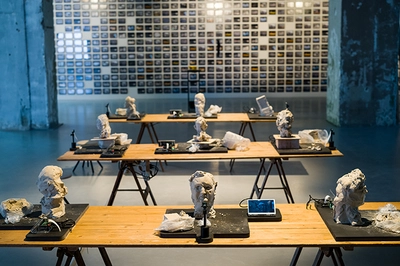
Face Detected, Dries Depoorter © Boudewijn Bollmann
My work Jaywalking is based on unsecured cameras: it shows three screens and three push buttons. The three unsecured with internet connected cameras are focused on an intersection to detect if someone is jaywalking. As an observer you’ll get the question: Would you like to report the jaywalker? If you push the button, you’ll send an email to the nearest police office with pictures attached of the jaywalker. Jaywalking Frames is the derivative: a series of pictures where people are jaywalking. Pictures are for sale for a price which is the same as the fine that should be paid in the country where the photo has been taken.
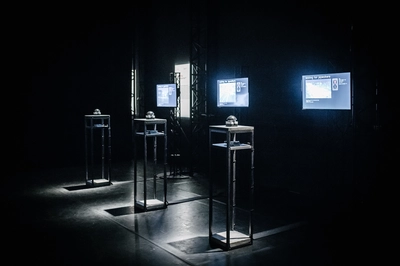
Jaywalking, Dries Depoorter © Marion Bornaz
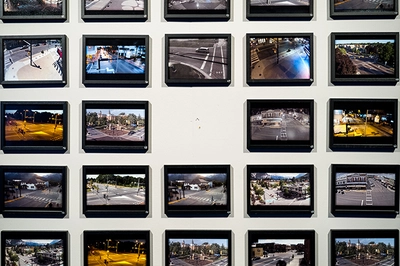
Jaywalking Frames, Dries Depoorter © Boudewijn Bollman
Die With Me is an application you can only use with a battery less than 5%. Co-developer Cavid Suprenant and me described it as ‘Die together in a chatroom on your way to offline peace’. The app was for a long time on top in the Apple Store. A few weeks later after the launch, the app had been copied. I demanded to take the app offline within 24 hours. The app had even the same name in Google Play Store. A few hours later they changed the name to Live With Me. I could attack all stupid copies. But I don’t want to think about it. I’d rather make new apps than worrying about the copies.
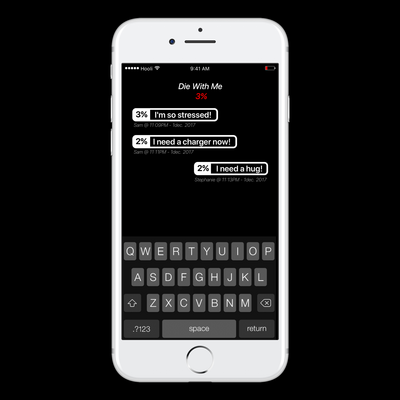
Die With Me, Dries Depoorter © Dries Depoorter
LG Electronics launched a print campaign based on TinderIn. I sent an invoice of ten thousand euros for using my idea. No reaction, but the creative director blocked me on social media. They didn’t pay, which wasn’t really my intention but I wanted them to know that I was aware of the fact they had stolen my idea. Again online articles appeared.
I believe artists are the R&D of publicity agencies.
The internet regulates and people are smart enough to distinguish the real from the copy. I’m not the only victim. More and more often publicity agencies steal ideas of artists.
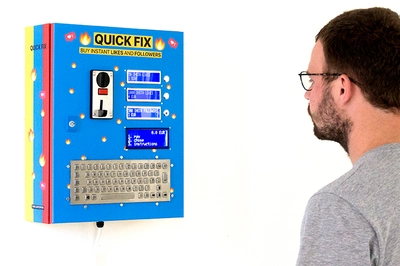
Quick Fix, Dries Depoorter © Dries Depoorter
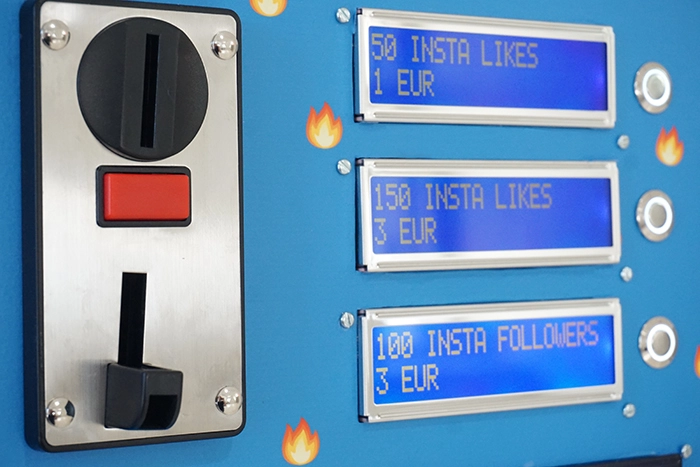
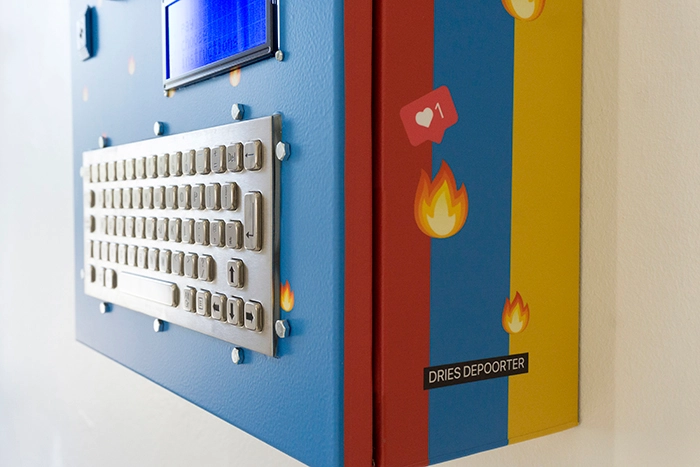
It’s a hit right: from TedX Brussels to South by Southwest in Texas. I consider myself as an artist and an entrepreneur. At the academy it seems like a taboo to talk about incomes and money. I’m hoping this subject will become more and more accessible during our art education classes. Art schools abroad do pay attention about this subject. I learned a lot by working for publicity agencies as a concept provider. It is a sector where creativity and entrepreneurship come together. The advertising world runs counter to the art scene. I think it’s still important not to surround myself only by artists, but also by entrepreneurs. Entrepreneurship is so important, also in the art scene. Because of that, I’m still working as a freelance concept provider from time to time.
I’ve learned. It’s always trial and error. Same in every job. It starts with determining a price and eventually saying ‘no’ to those who pay too little. Some projects fail, others don’t. It’s often enough for me when media publish about it. That’s the reason I get more and more questions about giving lectures. I’m on the road a lot, from design festivals to technology fairs. These artist talks have become a big part of my job.
It was always self-evident for me.
It’s so nice museums venture to new media art.
Gradually it’s becoming more and more relevant as paintings and sculptures for them. I benefit from the attention for this form language with an increasing amount of questions. For example: they thought it was a good idea to show Die With Me at an exhibition, even though it’s an internet project. Presenting an app in a museum seemed like a bad idea. For that reason, I designed an installation with a neon sign ‘Die With Me’ with the always open chat room beside it. You can track live without having a low battery. In this way, the story becomes more and more concrete and understandable. It’s important to me to reach a large public and to make it in several forms.
Dries Depoorter is one of our speakers on the main stage of Creative Ville. Do you want to hear his story on 22nd of November?
Cookies saved